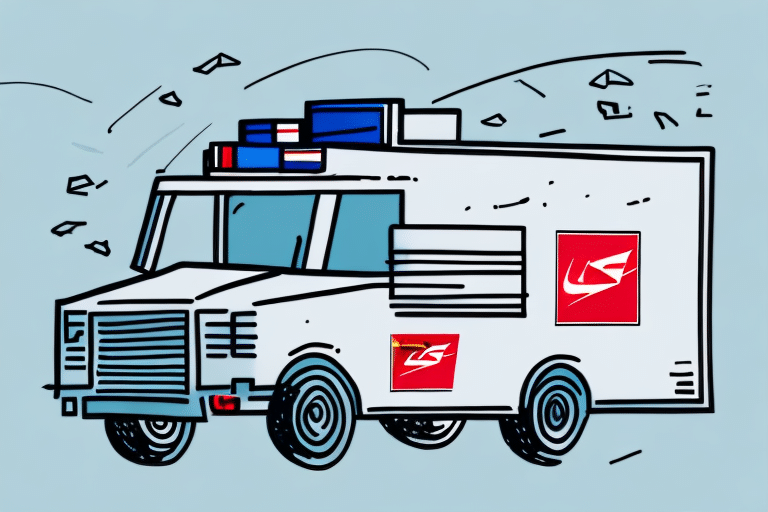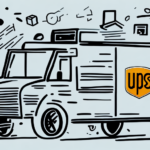Protect Your Shipments with USPS Package Insurance
Are you concerned about the safety of your USPS shipments during transit? Whether you're sending fragile items or expensive electronics, USPS package insurance can provide the peace of mind you need. In this guide, we'll explore everything you need to know about obtaining USPS package insurance to ensure your deliveries arrive safely and securely.
Why You Need USPS Package Insurance
While USPS strives to ensure that packages arrive safely, unforeseen incidents like loss, damage, or theft can still occur. Obtaining USPS package insurance protects you from potential financial losses associated with these events.
- Financial Protection: Reimburses the value of lost or damaged items.
- Affordability: Insurance costs are based on the declared value, allowing you to pay only for the coverage you need.
- Comprehensive Coverage: Protects a wide range of valuable items, including electronics, jewelry, and artwork.
According to USPS, package insurance is an affordable way to safeguard your shipments against potential losses.
Understanding USPS Package Insurance
How It Works
USPS package insurance is an optional service that can be added to your shipment for an additional fee. In the event of loss, damage, or theft, you can file a claim to receive reimbursement up to the insured value of the item. The reimbursement amount is based on the declared value when you purchase the insurance.
Coverage Limits
The coverage limit varies depending on the mailing service used:
- Priority Mail Express: Includes up to $100 of insurance coverage at no additional cost. You can purchase additional coverage up to $5,000.
- Priority Mail: Insurance can be added based on the declared value of the package.
- First-Class Mail: Limited insurance options are available.
It's important to note that insurance covers the value of the contents only, not the shipping fees or taxes.
Eligible Items
Most tangible items are eligible for USPS package insurance, provided they are not prohibited by law or by USPS regulations. Commonly insured items include:
- Electronics
- Jewelry
- Artwork
- Books and media
However, certain items are excluded from coverage, such as:
- Perishable goods
- Live animals
- Firearms and hazardous materials
For a complete list of prohibited items, visit the USPS Hazardous Materials Regulations.
Calculating and Purchasing Insurance
Cost Calculation
The cost of USPS package insurance depends on the declared value of your shipment. The higher the value, the higher the insurance cost. USPS provides an online insurance calculator to help you determine the exact cost based on your package's value.
Adding Insurance Online
Adding USPS package insurance to your shipment is straightforward:
- Visit the USPS website and navigate to the shipping section.
- Create your shipment label and select the insurance option.
- Enter the declared value of your package to calculate the insurance cost.
- Complete the purchase and print your shipping label with the added insurance coverage.
If you're using platforms like eBay or Etsy, many offer integrated USPS shipping options where you can add insurance directly through their shipping interfaces.
Filing a Claim for USPS Package Insurance
Claim Process
If your package is lost, damaged, or stolen during transit, you can file a claim with USPS to receive reimbursement. Here's how:
- Visit the USPS Claims page.
- Fill out the required forms with details about your shipment and the incident.
- Provide proof of the item's value, such as receipts or appraisals.
- Submit the claim online or mail the necessary documentation.
Ensure you file the claim within the specified timeframes, which vary depending on the shipping service used. For example, Priority Mail Express claims typically have a shorter filing period compared to Priority Mail.
Common Reasons for Claim Denials
Understanding common reasons for claim denials can help you avoid them:
- Insufficient Proof of Value: Ensure you provide accurate documentation of the item's value.
- Improper Packaging: Packages must be securely and properly packaged to qualify for insurance.
- Late Filing: Claims must be filed within the designated timeframes.
- Incorrect Address: Claims may be denied if the package was not delivered to the correct address.
For detailed information, refer to the USPS Claims Instructions.
Tips for Protecting Your Shipment During Transit
While USPS package insurance provides financial protection, taking proactive steps can minimize the risk of damage or loss:
- Use Sturdy Packaging: Select strong boxes and high-quality padding materials to protect your items.
- Choose the Right Shipping Service: Opt for services that offer tracking, signature confirmation, and expedited delivery for added security.
- Accurate Labeling: Double-check shipping addresses and ensure labels are securely attached to prevent misdelivery.
- Declare Fragile Items: Clearly label packages containing delicate items to prompt careful handling.
- Track Your Shipment: Use USPS tracking tools to monitor your package's journey in real-time.
Implementing these best practices can significantly enhance the safety and reliability of your shipments.
Conclusion
Investing in USPS package insurance is a smart way to protect your valuable shipments from unforeseen risks. By understanding how the insurance works, accurately calculating costs, and following best practices for packaging and shipping, you can ensure that your packages arrive safely and securely. For more information and to purchase insurance, visit the USPS official website. Happy and safe shipping!






















